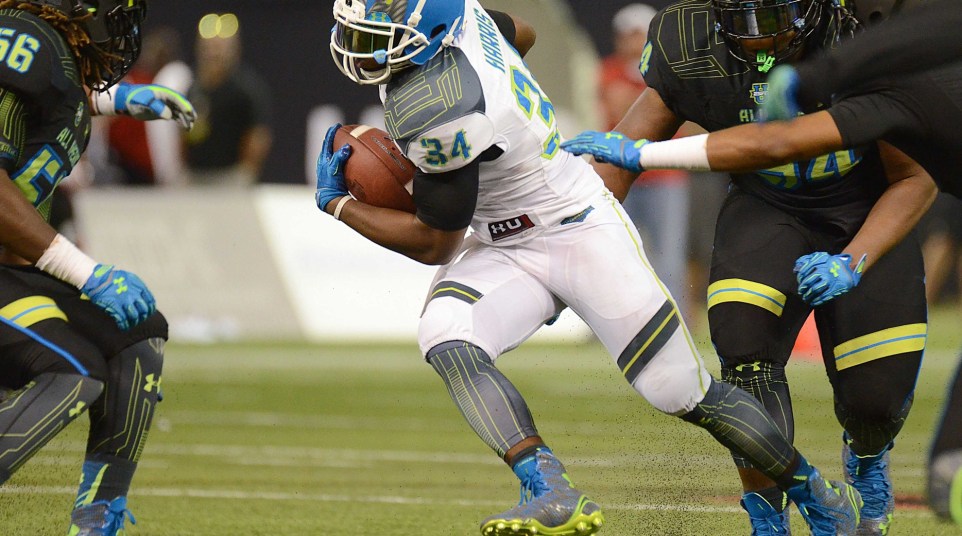Alabama needs Damien Harris to be an impact freshman
When Damien Harris picked Alabama over his home-state Kentucky Wildcats, it seemed as if he was making a choice. Harris could have gone to Kentucky, been an instant star and lifted the Cats up from the bottom of the SEC East. Instead, he decided to go to Alabama and wait his turn in a deep, talented backfield before playing for a perennial championship contender.
As fate would have it, Harris won’t have to wait long to get on the field for the Crimson Tide. Thanks to the loss of three running backs this offseason — Bo Scarbrough to injury, Altee Tenpenny to transfer and Tyren Jones to dismissal — there’s suddenly a need for talent in the backfield in Tuscaloosa.
That gives Harris, the top-rated running back in the 2015 recruiting class, a chance to shine early on in his career. It’s a huge change from the start of spring ball, when it seemed like a near-certainty that Harris would end up redshirting once he arrived on campus this fall.
Alabama still has some of the best talent in the conference at running back, even without those three backs heading into 2015. Derrick Henry is around to steamroll the SEC, while Kenyan Drake returns from injury to serve as a versatile weapon both running and receiving. However, if offensive coordinator Lane Kiffin uses Drake like a wide receiver or in a hybrid role — which he did in spring practice — that means there will be backup carries to be had.
Despite early enrollee DeSherrius Flowers’ presence at spring practice, Harris will be counted on to make himself the guy who’s next in line for carries once he arrives on campus. With size, strength and breakaway speed, he’s already built to be an SEC running back.
How much will Alabama need from him? Being a five-star arrival generally carries major expectations, although it varies by school and situation. Last year, LSU’s Leonard Fournette was getting Heisman buzz before he stepped on campus, Georgia’s Sony Michel was thought to be a nice change of pace for Todd Gurley, while Nick Chubb and Auburn’s Roc Thomas were both buried on the depth chart.
We can safely say that Harris won’t be counted on nearly as much as Fournette was expected to be, or like Chubb was by the time midseason rolled around. The workhorse role falls to Henry, who is built like a tank and can certainly handle the pounding that comes with that job. Unless there’s another injury in the Alabama backfield, there just won’t be enough carries for Harris to have that kind of a season.
Expectations for Harris should probably fall more in line with Michel’s heading into last season, before injuries took their toll on the explosive back (and the rest of Georgia’s backfield). While built similarly, Michel was more burner coming out of high school than Harris is. Coming into his freshman year, Michel was expected to work in with Keith Marshall behind Todd Gurley for carries in Georgia’s offense. While none of that worked out, thanks to injuries and suspensions to all three that opened the door for Nick Chubb to emerge as a superstar, the plan was solid.
If Harris can function as effectively in a reserve role as Michel did last year (he picked up 6.4 yards per carry as a freshman), with somewhere around 8-10 carries per game, Alabama will be in very good shape. With Henry punishing defenses with his freakish size and speed and Drake serving as a Reggie Bush-type weapon (a poor man’s Reggie Bush), there’s a perfect lane for Harris to jump into as a freshman.
Unlike most touted Alabama recruits, Harris won’t have time to sit and watch behind his veteran teammates. Along with Flowers, he’ll be needed on Saturdays just a few months after leaving high school.

